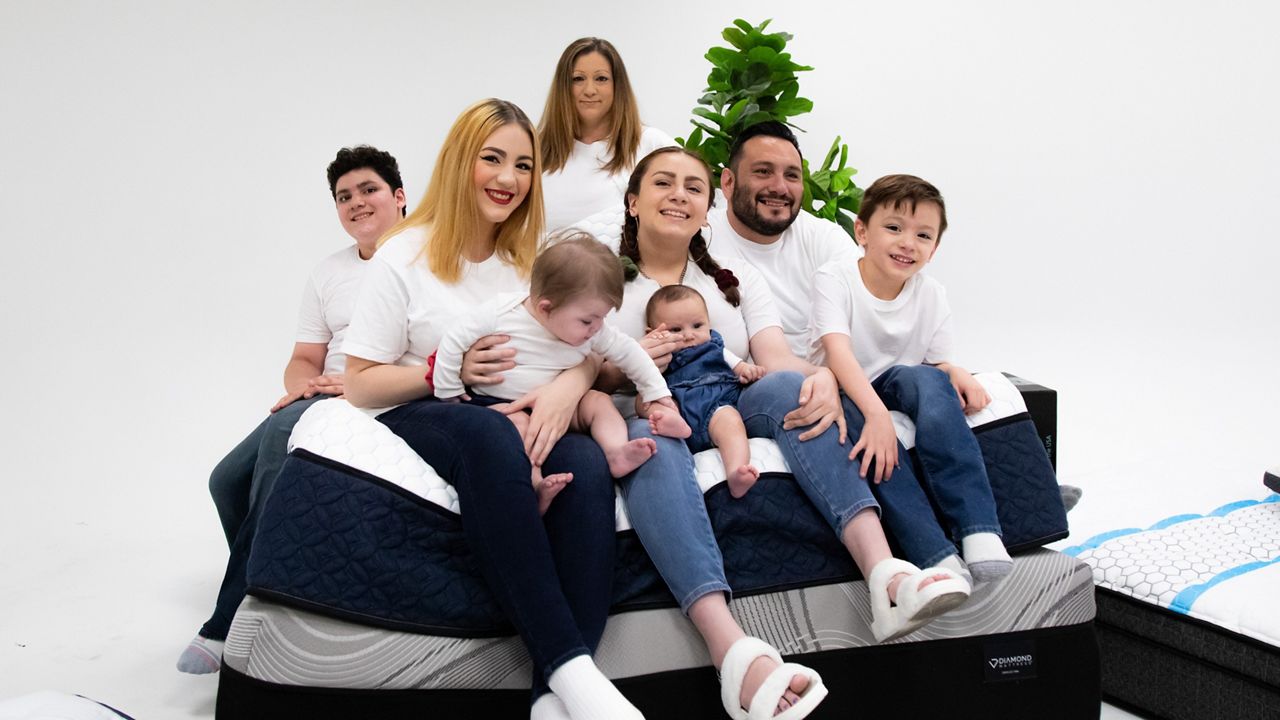ORANGE COUNTY, Calif. — Even now, with a roof over her family's head and food always in the fridge, Margaret Trujillo worries.
After years of living in motels and the family's Honda Odyssey, the family of six now find themselves in permanent housing. They live in Stockton now, having, at last, managed to find some assistance with the Family Promise of Orange County.
In 2016, the family first became homeless after Margaret, 45, blew out her Achilles tendon. She lost her cleaning accounts, eliminating an important income source for the family.
Money continued to come in through her husband, Mike, and her oldest daughter, Mary. But not enough for the family to successfully get an apartment.
So they took to sleeping in the minivan. Sometimes the family woke up to find strangers watching them. Mary had various jobs, including as a barista at Starbucks. But health problems intervened, disrupting the cash flow enough to keep the family in a cycle of homelessness. They made enough for gas, the occasional motel room and food.
Otherwise, their progress was stalled.
In 2018, they managed to get connected with Family Promise and find their way into their Stockton apartment, the only one the nonprofit has that can accommodate a family that size.
They have security now, but Margaret said the family is still shifting from survival mode.
“What happens if it all goes away again,” she asked?
The Trujillos are just one of many California families squeezed between stagnant wages, rising rents and one of the most competitive housing markets in the nation. Added to the external troubles are health problems. Margaret and Mike are both registered for disability. Otherwise, they wouldn’t qualify for the assistance provided by the Family Promise of Orange County.
The Trujillos navigate the state’s California Care public health system for assistance. California spends over $102 billion a year on disability for state residents, or about 38% percent of the state's health care costs.
There’s often overlap among families with health problems severe enough to disrupt regular employment and disability. And California has an estimated 161,548 homeless people as of 2020. According to data collected by U.S. Department of Housing and Urban Development, more than 8,000 were family households. Homelessness numbers can be difficult to track, as many local municipalities conduct a count just once every year or two. And homeless families are sometimes reluctant to self-report.
Those homelessness numbers can create fissures in the state's effectiveness in education. Between 2018 and 2019, more than 250,000 students experienced homelessness over the course of the year. That feeds into arguments to support other expensive programs like free school meals at breakfast and lunch.
The expense and scale of the problem leave plenty of room for organizations like Family Promise to slip in and assist.
They provide the bulk of the assistance with difficult, lengthy application processes for public health care, unemployment and disability.
The homes they place families into are subsidized by HUD, and each family is required to pay a third of their income toward rent. The rest is picked up by federal dollars.
The organization set down roots in New Jersey in 1986. By 2012, it had begun helping families in Orange County. Family Promise has placed over 180 families between 2017 and 2020. Family Promise hopes these families will graduate to living situations that require less assistance. But the program is in place to help them as much as they need as long as they need it.
The nonprofit supports every family’s effort to eventually leave the program, understanding that may never happen.
For the Trujillos, life is simplified now. No more 6 a.m. check-outs from shelters, or sneaking six people into a motel room for a night or jumping a fence to shower next to a pool.
“It’s hard work to do that,” Margaret said.
Now with a roof over their heads, the Trujillos still have their health problem to contend with. Mike has chronic migraines treated with a monthly shot and a strict, low-fat, high-fiber diet. Now they are pursuing new passions. Mike hopes to return to work soon, Mary, 22, is taking courses at community college, and Margaret is writing a book. She wants to tell her family’s story.
“I feel like we’re just getting to the point where we can live again,” Margaret said.



